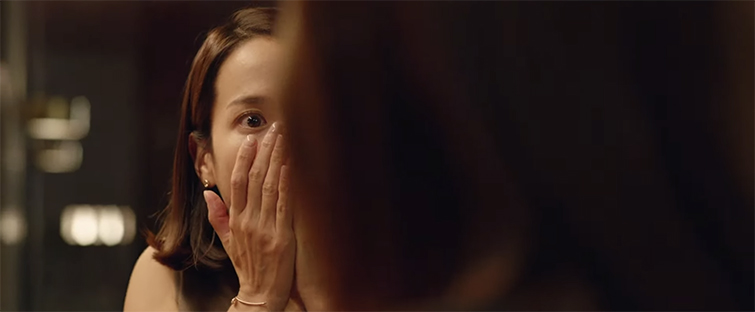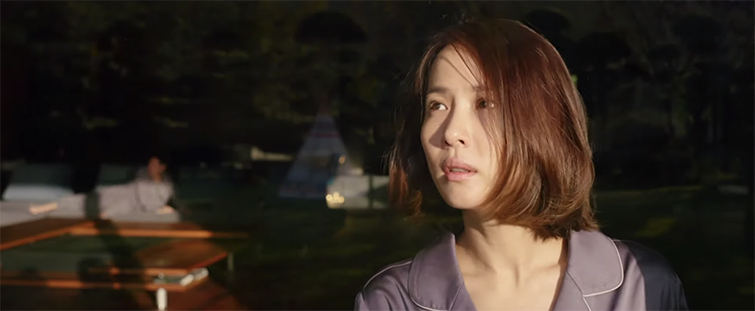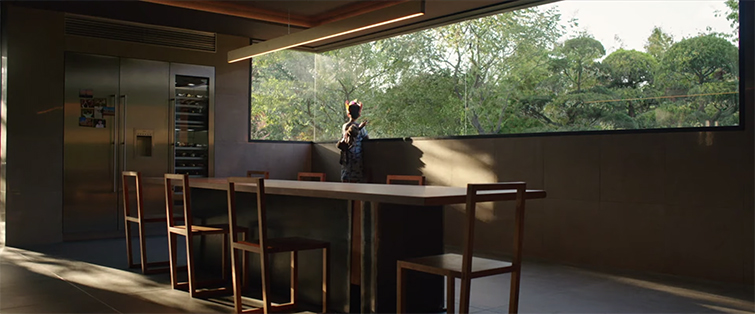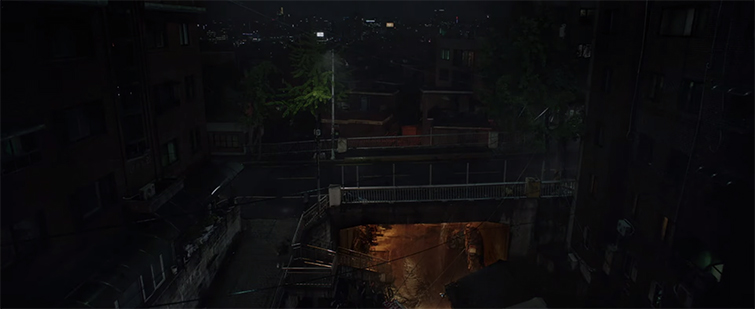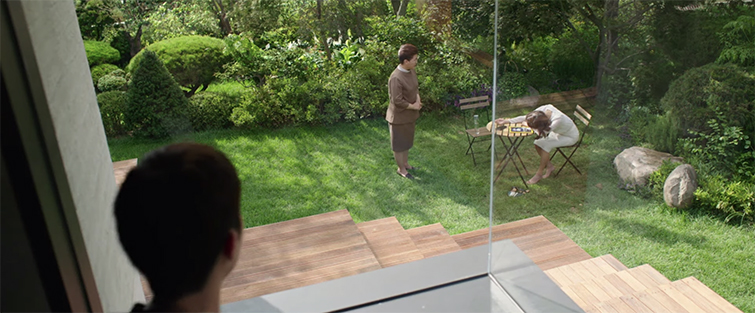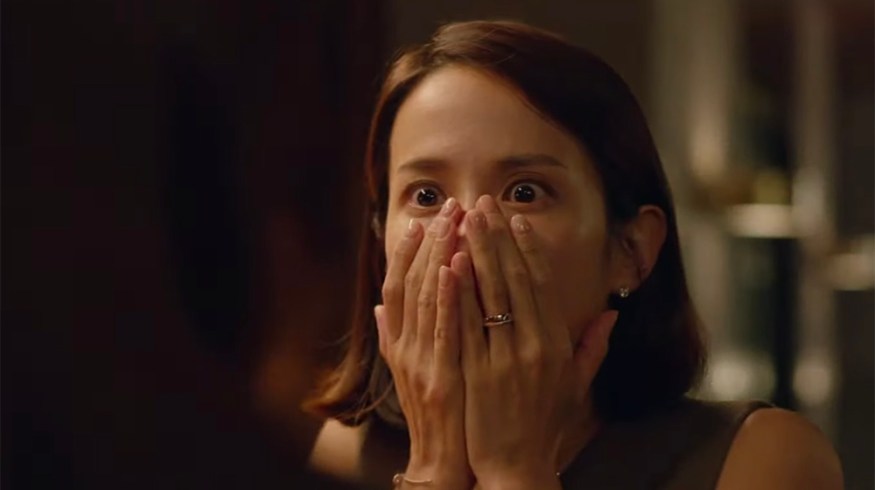
Cinematography Breakdown: Creating the Look of Parasite
Let’s take a look at the cinematography, blocking, and storyboarding of Bong-Joon Ho’s latest masterpiece.
Parasite has broken boundaries, records, and brains the world over — and rightfully so. The movie is a master class in writing, directing, acting, editing, and cinematography.
Over on the Hurlbut Academy’s YouTube channel, Shane Hurlbut’s team recently took a deep dive into exactly how the Parasite team pulled off the Oscar-winning film’s visual tone and aesthetic. Let’s take a look.
Framing the Shots
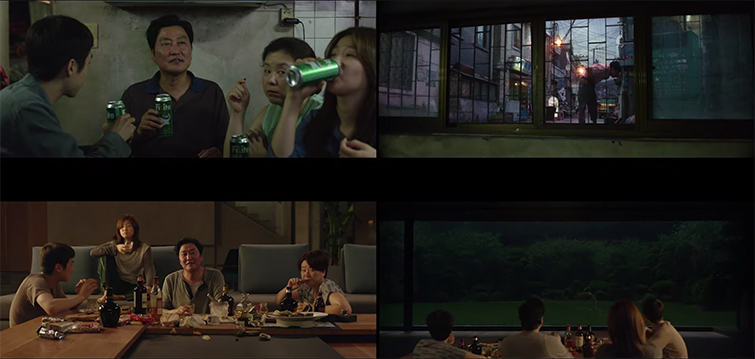
Image via Hurlbut Academy.
While writing the script, Bong drew mock-ups of the houses in the film. This let the production design team get a head start on their work.
Each home was designed with front-facing windows that essentially mirrored the windows of the other home. For the poor family, the window is small, and their view is of a drunkard relieving himself. For the rich family, a larger, more expansive window (described as having an aspect ratio of 2.39.1) was created, one that looks out over a beautiful garden. Additionally, the poor family lives underground, while the rich family lives on a hill.
Inspired by Kurosawa’s High and Low, Bong initially shot down toward the poor Kim family. When the son becomes the tutor, the perspective flips, and we look up at him.
First working with Bong on his previous film Snowpiercer, cinematographer Kyung-pyo Hong shot Parasite on the Alexa65 in order to allow for wider, more encompassing shots without needing to use a super wide lens.
Also, I just want to say that I think about Snowpiercer at least once a week, and I think it might just be one of my favorite films of all time. Moving on.
Lighting
While Bong’s framing and shooting style helped convey the tone of the film, Kyung-pyo’s lighting also had a major impact on how we view the characters and settings. For example, to further distinguish the differences between rich and poor, Kyung-pyo played with sunshine — and the lack thereof.
In the rich family’s mansion, most of the house’s interior is comfortably washed in warm-hued natural light all day. In the poor family’s basement, sunlight only comes through a small window.
Kyung-pyo also installed low-end lamps in the basement — greenish fluorescent and tungsten incandescent of the sort you’d actually find in a Korean household. Additionally, the hue of the street lamps outside is a dull red.
Staircases and Influence
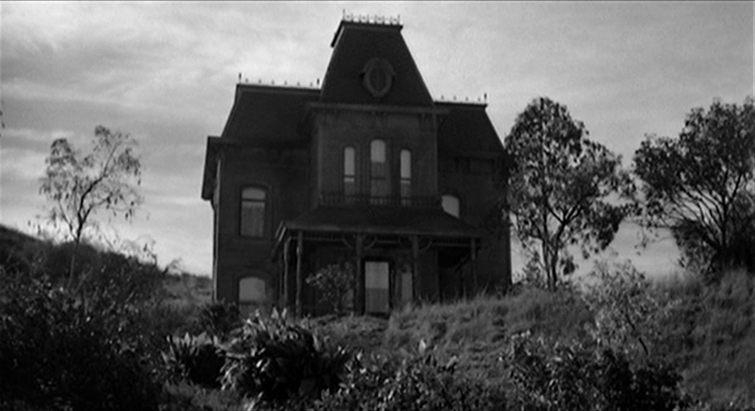
Image via Paramount Pictures.
Staircases play a prominent role in Parasite, signifying promotion and demotion in the world of the film.
The mother of the Kim family is seen ascending stairs as the freshly fired maid walks down and away from the rich house. When Ki-jung begins her art therapy lesson, she essentially demotes Yeon-kyo by instructing her to wait downstairs. And once the Kim’s leave the mansion, we see them running down several flights of stairs, far enough in the distance that they look like tiny little bugs.
Bong is on record citing Hitchcock’s use of stairs in Pyscho as a big influence on the film. He was also inspired by Ki-young Kim’s The Housemaid from 1960, which was about a bourgeois family dealing with an intruder.
The Importance of Symmetry
Bong’s previous work is filled with hyper-symmetrical shots — not really in the whimsical Wes Anderson style, rather more in the Kubrick one-point-perspective sense. However, Parasite does something different. With Parasite,Bong gives us almost symmetrical shots.
These shots were intentional; Bong wanted us to feel like we were almost getting somewhere and a sense that we’d never fully arrive.
Filling the Frame
At the beginning of the film, the Kim family surrounds their boss in the alley near their home. The shot keeps the boss framed in the center as each family member basically squeezes into frame to slowly surround her. They’re close, and they’re sticking together. This technique foreshadows whats to come. The Kim’s are also all present in a few basement shots. Meanwhile, the Park family is often framed separately — not together and not unified.
This approach is genius in its simplicity.As a viewer, you might not even realize what’s happening in the carefully framed shots, but you feel it. The story itself only helps you feel it more as the film pushes forward.
Dividing the Frame
In another perfect example of “you might not see it, but you definitely feel it,” Bong uses key physical location elements to split shots between the wealthy and poor. In many scenes, there are windows, background furniture, or textures on glass splitting the frame.
The house and locations are characters in themselves, and I doubt we’ll get another film so meticulously crafted any time soon. Luckily, the world now knows the greatness of director Bong Joon Ho.
We recently interviewed Parasite’s Oscar-nominated editor Jinmo Yang on what it was like editing in Final Cut Pro 7. Check out the interview here.
Cover image via NEON


